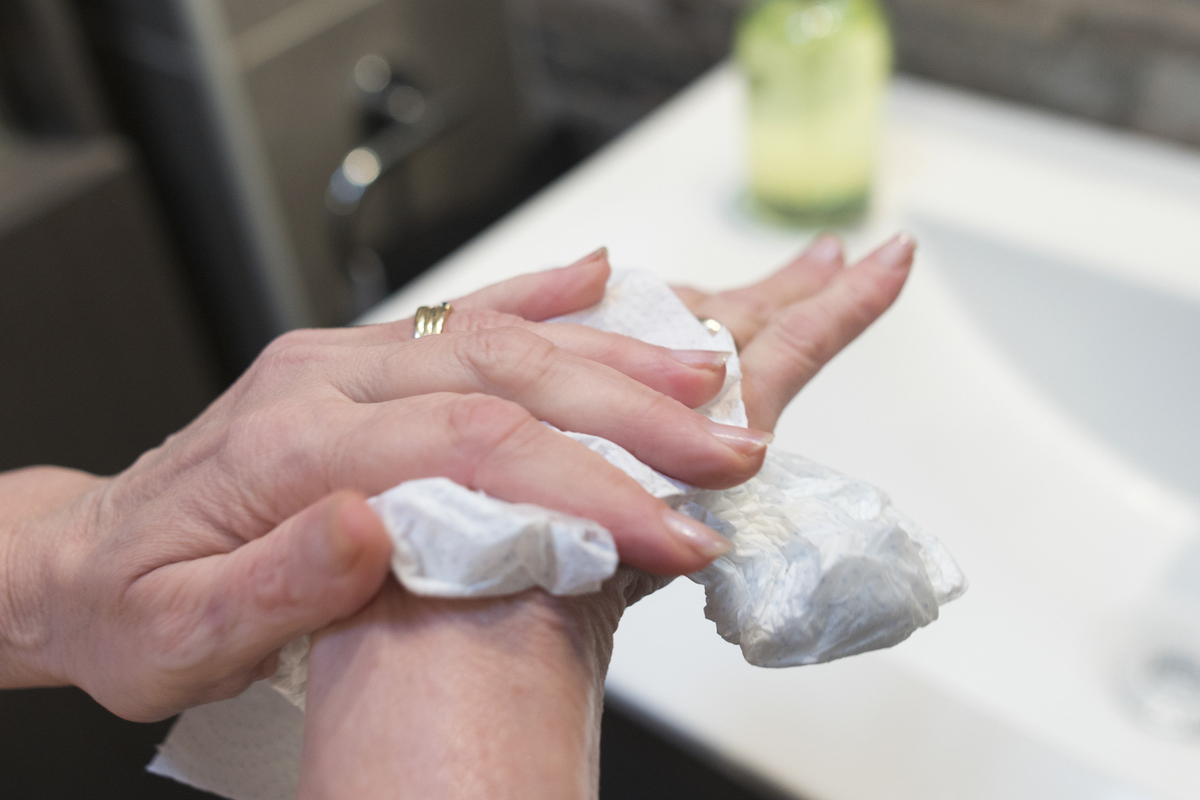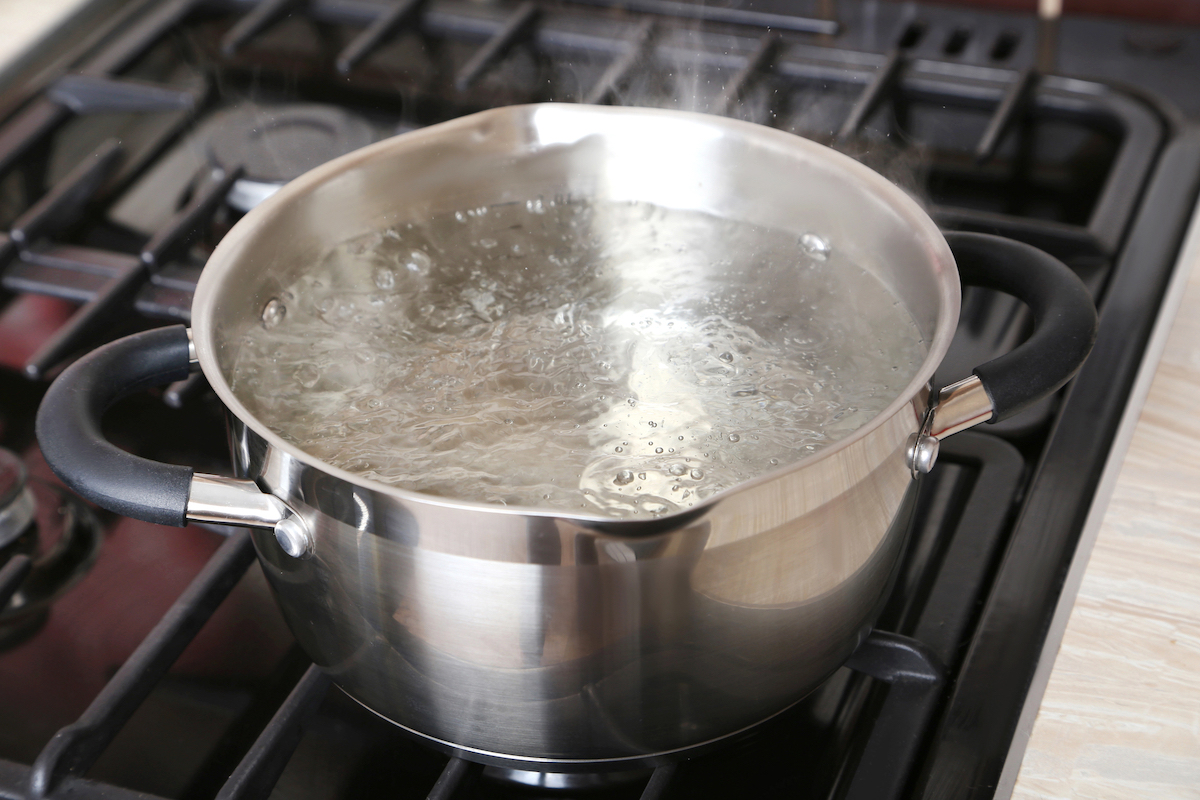

We may earn revenue from the products available on this page and participate in affiliate programs. Learn More ›
While epoxy’s ability to make tight bonds between a variety of surfaces makes it a great solution for a wide range of repair projects, its two-part application makes it one of the messier adhesives to work with. Since epoxy often sets quickly once mixed, getting it off unintended surfaces can be a challenge. Fortunately, there are simple methods for removing epoxy, whether you’re removing it from wood, metal, or skin. Keep reading to learn the tricks to undoing this seemingly permanent glue.
What Is Epoxy?

Epoxy is an adhesive you can use to bond a variety of materials, including wood, glass, concrete, metal, and stone, making it one of the more versatile adhesives out there. (It can even be used to give old kitchen countertops a glossy update.) Plus, it’s cheap, creates a durable bond, and is easier on the environment than other glues and adhesives. Epoxy comes in two separate parts, a resin and a hardener. You have to mix the two parts just before applying the adhesive. Once mixed, the hardener transforms the epoxy resin into a hard plastic substance that creates a bond between the two materials you’re gluing together.
Tools & Materials
Bobvila.com may earn a commission from purchases made through these links.
- Paper towels
- Microfiber cloth
- Putty knife
- Work gloves
- Heat gun
- Safety goggles
- Respirator mask
- Rubber gloves
- Tongs
- Vinegar
- Acetone
- Waterless hand cleaner
- Isopropyl alcohol
- Denatured alcohol
- Paint thinner
- Adhesive remover
- Aerosol spray refrigerant
How to Remove Epoxy From Skin

Wearing disposable gloves is a good first line of defense when working on an epoxy project, but accidents can happen. If you do get some epoxy on your skin, remove it immediately before it cures using one of the following methods:
- Vinegar: Soak a paper towel or cloth with vinegar and stroke it on the affected area until the epoxy softens enough to peel off.
- Acetone: If the vinegar fails, apply acetone or an acetone-based nail polish remover, which can dissolve uncured epoxy. Pour some acetone onto a paper towel and apply it to the glue to remove it, then rinse your skin thoroughly. Acetone vapors can be strong, so use it in a well-ventilated space.
- Citrus-based hand cleaners: Commonly used for grease removal by mechanics, citrus-based hand cleaners can also remove epoxy from your skin. Pour a small amount directly on the affected skin and rub to remove the adhesive. Wipe off or rinse under warm water; repeat if necessary. After the epoxy is removed, thoroughly wash the area and use hand lotion to soothe and heal your skin.
Safety Tip: While epoxy coming into contact with your skin isn’t a major cause for alarm, the resin can be a skin irritant and cause an allergic reaction for some people. Consider wearing gloves while using epoxy if you’re concerned about the glue coming into contact with your skin.
How to Remove Epoxy From Plastic or Glass

Epoxy might provide a quick fix for repairing broken plastic pieces or sealing a cracked window pane, but it can be a pain to remove excess glue from these surfaces. Follow the steps below to remove it:
- Soak a paper towel in isopropyl alcohol (rubbing alcohol) and rub it on the surface until the epoxy loosens. If the alcohol isn’t effective, try using a stronger solvent such as denatured alcohol or paint thinner.
- Using a scraper tool, gently pry the epoxy from the surface.
- Once the epoxy is removed, use a clean, wet rag to remove any remaining solvents from the surface.
How to Remove Epoxy From Concrete or Wood

Finishing a garage floor with epoxy paint is a popular use of the product, but sometimes the resin can get in places it’s not supposed to go. Avoid using alcohol and paint thinners, which can damage or discolor wood finishes and cause pitting in concrete. Instead, try the methods below:
- Acetone: Apply the acetone to the area with a cloth and rub it into the surface. The idea is to get the acetone to surround and loosen the epoxy, making it easy to peel away. Give it about 5 minutes to soak in. Using a scraper, gently work the epoxy loose. Any excess acetone will evaporate.
- Heat gun: Pull on leather work gloves to protect your hands and hold a heat gun, set to about 200 degrees Fahrenheit, several inches above the affected area. Move the nozzle in small circles to heat the epoxy evenly and avoid creating burn marks on the concrete or wood. Once the epoxy has softened, use a scraper to remove it from the wood or concrete.

Tried-and-True Advice
“One trick I’ve found helpful when working with epoxy on small projects is to keep a small bowl of sand or baking soda nearby. If epoxy drips accidentally onto surface or your tools, sprinkling sand or baking soda over the spill immediately absorbs the excess and prevents it from spreading further. Once the epoxy has hardened, the gritty surface makes it easier to scrape off without damaging the material underneath. This tip saved me from ruining a DIY project!”
—Paul Rankin, Contributing Writer
How to Remove Epoxy From Metal and Hard Surfaces
The above removal techniques using acetone or a heat gun will also work on errant epoxy that dripped on metal or other hard, nonporous surfaces, such as metal door jambs or your favorite toolbox. If acetone fails, try the methods below:
- Chemical: Try a chemical adhesive remover, usually sold in hardware stores as sprays or liquids meant to be applied with a cloth. Be sure to wear gloves to protect your skin when using these chemicals and carefully follow the manufacturer’s instructions.
- Spray refrigerant: Use a refrigerant spray on the offending epoxy to freeze it. After spraying the epoxy, it should become brittle, making it easy to chip away with a scraper. Spray refrigerant is also a dangerous chemical, so gear up with safety goggles and gloves and work in a well-ventilated area when using it.
How to Remove Epoxy From Fabrics

If you’ve found a dollop of epoxy on your work clothes, there is a way to remove the epoxy without ruining the fabric. Acetone or paint thinners may discolor or dissolve fabrics, while abrasive methods like scraping could easily damage the delicate weave of the material. That leaves heating the epoxy as the easiest way to loosen and peel it away: Dip the fabric in a pot of boiling water for a few seconds at a time, then lift it out of the water with tongs to gently peel away the epoxy. (Since it will be hot, wear rubber kitchen gloves or use cooking utensils instead of your fingers.)
Fabrics such as cotton and linen won’t be damaged by boiling water, but beware of melting synthetic fabrics or shrinking wool. For fabrics that cannot withstand heat, try rubbing with—or soaking in—vinegar before washing in cool water.
Epoxy Removal Tips
- Time is of the essence when attempting to remove epoxy. While it’s possible to remove epoxy once it’s cured, it’s much easier to remove it while it’s still in the drying process.
- The above methods are for removing small amounts of epoxy from small areas. If you’re trying to remove epoxy adhesive or paint from a large area, such as a concrete garage floor, then you’ll need to use a large machine, such as a grinder or industrial scraper.
- If you’re using a solvent to remove epoxy, try testing the solvent first on an inconspicuous part of the material to make sure it doesn’t damage it.
